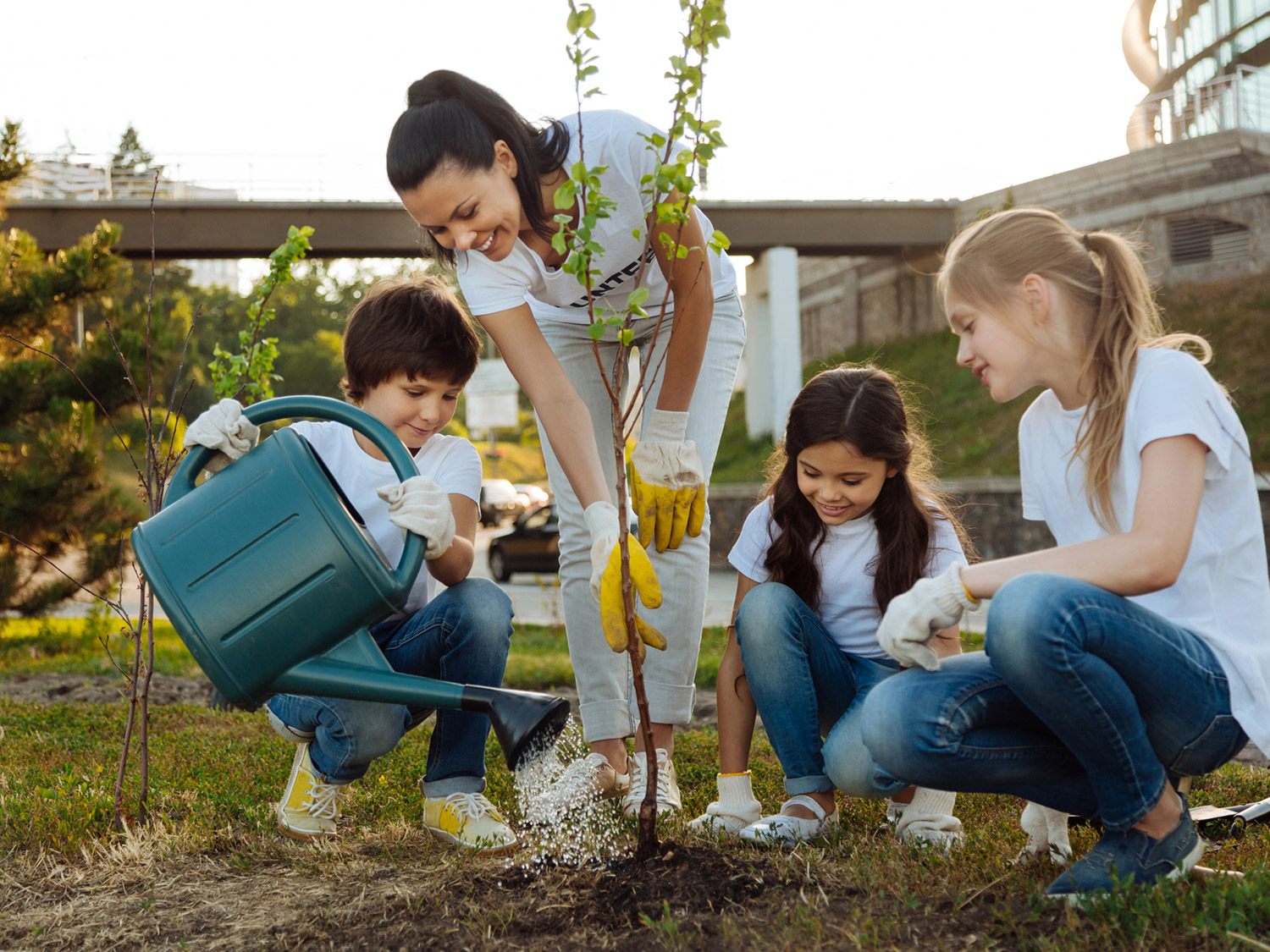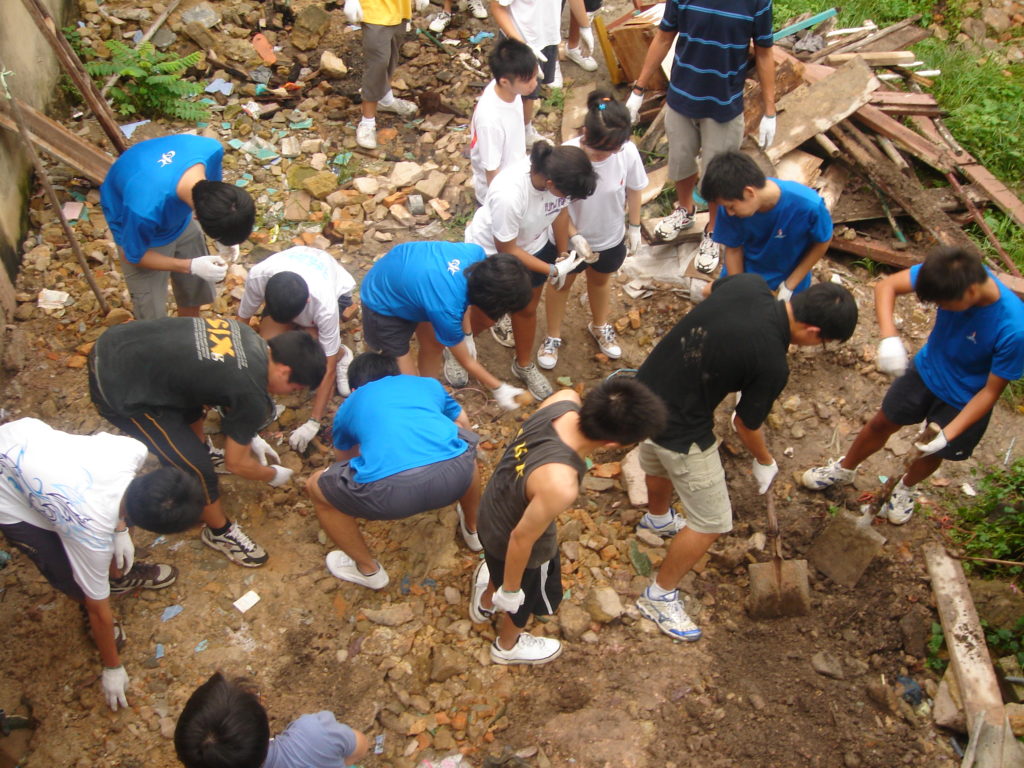How We Can Teach Our Kids to Care About the World?

What if the thing that you want to protect your child from is the very thing that you should expose them to?
As parents, you’re inclined to protect your children from being exposed to social realities like poverty and sickness. But did you know that exposing them to real-world problems the right way can be beneficial for their cognitive, personal, and social development?
A study in the Journal of Personality shows that our brain responds to other people’s pain much the same way it responds to our pain. Being exposed to pain develops empathy and concern for the rights, feelings, and welfare of other people. In turn, it makes us more inclined to extend a helping hand when needed.
Moreover, teaching empathy and social concern does not have to wait until our children reach college. Lessons can begin as young as two years old.
Teaching civic consciousness through service learning
Studies show that a service-learning (S-L) approach to education increases empathy and social consciousness among students. Not only that, but it also promotes academic achievement and interpersonal development.

We’re all familiar with community service and immersion programs in college. A bunch of students goes out to help in medical missions or are assigned to live in an ultra-poor community up in the mountains. These community service and environmental projects are good.
Service-learning, however, goes beyond community service. It’s a pedagogical method wherein community service is not just an isolated activity but an integral part of the academic learning process. In an S-L program, the community service serves as the experiential platform where students are encouraged to apply the concept, principle, or skill they learned in the classroom to real-life situations.
Based on studies, service-learning impacts academic, personal, and social development. When students are challenged to apply what they’ve learned in the classroom to real-world problems, they shift from passive to active learning, and they are motivated to work harder. They develop critical thinking and problem-solving skills better and are more likely to come up with practical solutions.
Students also grow morally, spiritually, and inter-personally. They become more self-aware and community-aware. Their tendency to create stereotypes lessens, and they become more committed to service.
Not all service-learning programs are created equal, though. High-quality S-L programs are more likely to have a greater impact on the students.
Community service programs in college
In 2014, UST students who are enrolled in the National Service Training Program (NSTP) took part in a service-learning program for the women of the Little Sisters of the Abandoned Elderly. The program was designed to train the students on how to interact and care for the elderly while applying their respective areas of academic study to create activities for their beneficiaries.
For instance, the College of Education students were tasked to prepare activities using instructional learning theories and concepts while Fine Arts and Design students prepared arts and painting activities.
A survey conducted to assess the impact of this program revealed that student participants’ perspective on the elderly changed. They became less prone to stereotyping them and more appreciative of their importance to family and society.
Service-learning in elementary through high school
There are public and private elementary and high schools in Metro Manila and other parts of the Philippines that use a semblance of service-learning in their teaching approach. A few consider it integral to their teaching philosophy.
In those schools, elementary service-learning may focus on nurturing self-awareness and empathy towards people, the community, and nature. When the kids reach high school, they begin to take a proactive role in coming up with activities that deal with issues like global warming, poverty, and social equality.
Starting them young
It’s never too early to prepare your children for service-learning. One way to do so is by teaching empathy to toddlers.
One study reveals that children as young as two years old would help a person in need whenever they can. Another study shows that preschool-aged children who are frequently exposed to caring parents, caregivers, or teachers become inclined to show prosocial behaviour like helping, sharing, and giving.
Moreover, when children are rewarded for their caring acts, either by praise or by seeing how their actions helped another person, the more they want this trait to be attributed to them.
Early childhood education is known to have lifelong effects on how children would view and relate to their environment for as long as they live. Thus, teaching your toddlers empathy at this age is crucial. They may not need to be introduced to world issues but their “community” at this point can include people like their parents, siblings, playmates, teachers, and schoolmates.
Teaching your kids empathy by gradually exposing them to real-world problems and allowing them to become part of solving these problems is a healthy way to prepare them for adulthood. It does not only make academic learning more interesting, but it will make them well-rounded individuals who genuinely care about their community.